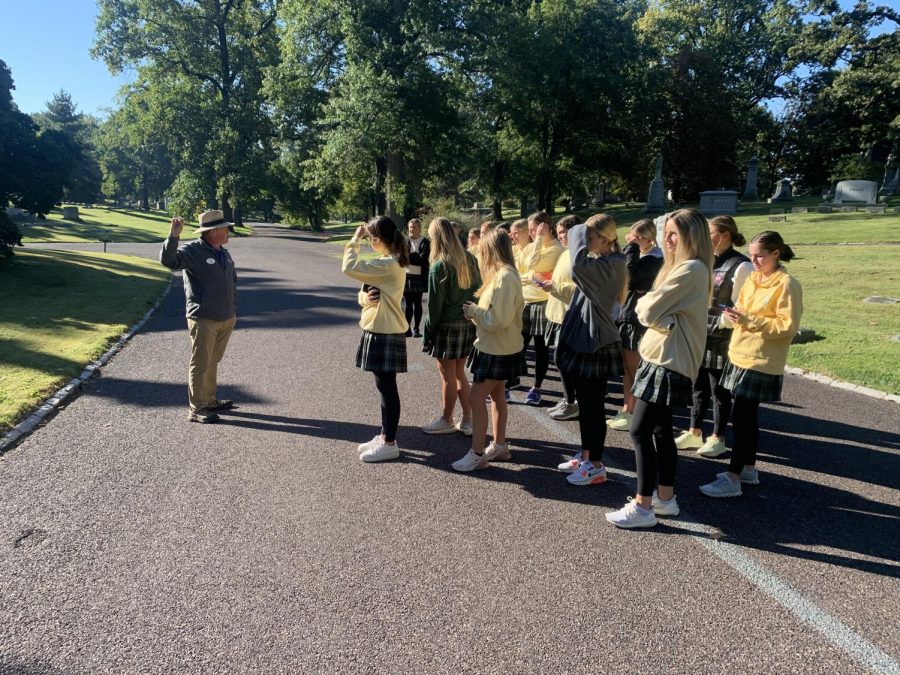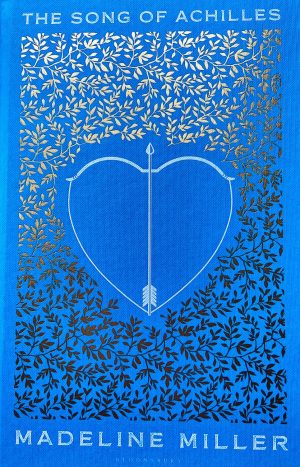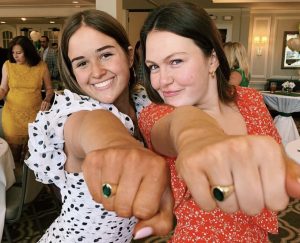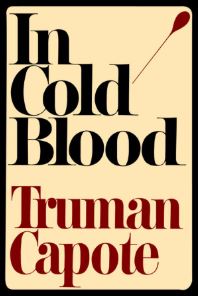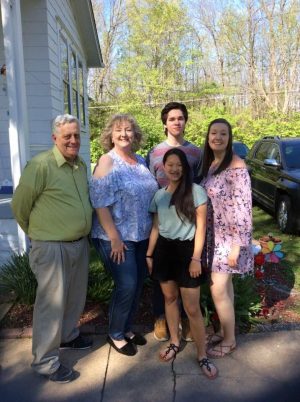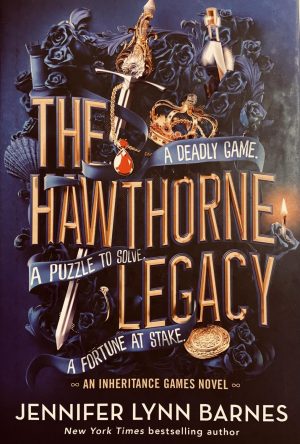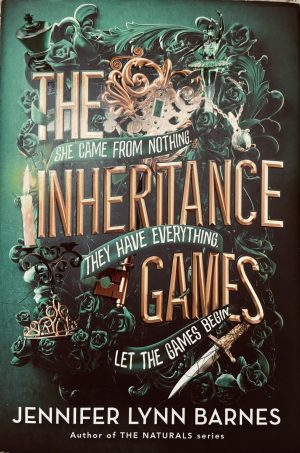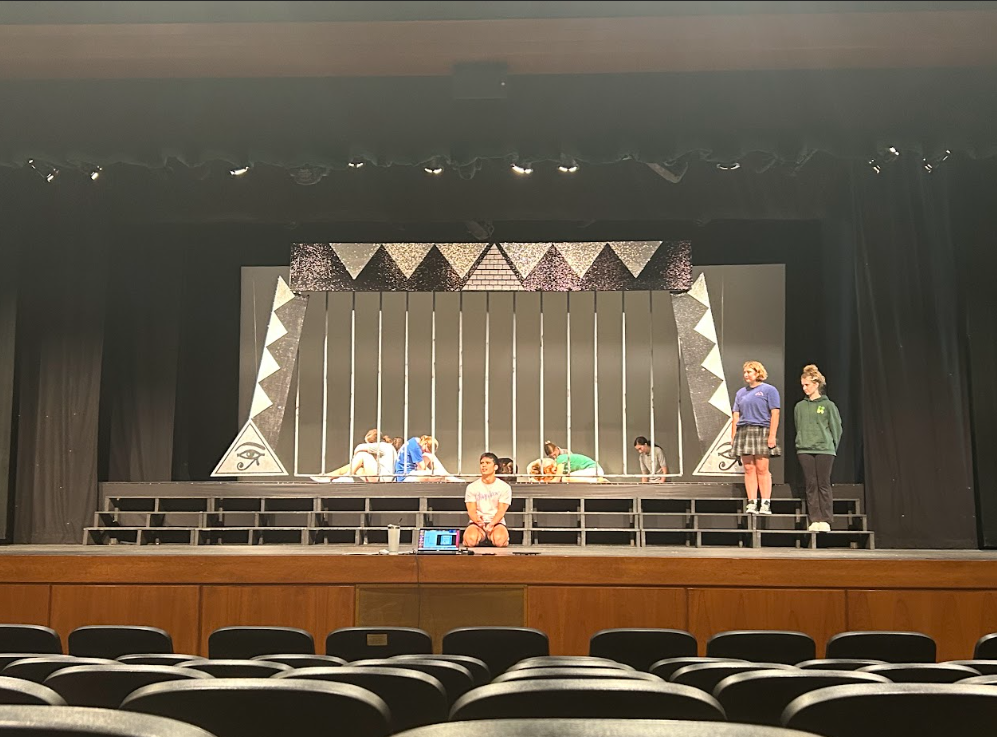The Death, Dying, and Living Class Learning at Bellefontaine Cemetery
St. Joe seniors receiving a tour from one of the guides at the Bellefontaine Cemetery.
October 1, 2022
The religion semester elective, Death, Dying, and Living, taught by Mr. Andy Lodes took a field trip to the Bellefontaine Cemetery on Friday, September 20. The senior students, Ms. Davis and Mr. Lodes were split into three groups and given an in depth tour by experts on the cemetery.
The students arrived at the cemetery at 9:00am and left at 11:00. In those two hours, they were taken around the large and historic graveyard learning about the people who lay there, their stories, and the mechanics and rules of a cemetery.
The family plots at Bellefontaine are very well-known and prioritizes the idea of a family being united even after death.
The mausoleum tour specifically fascinated the students. Mausoleums are an ancient Egyptian tradition and the word originally comes from the idea of the wonders of the ancient world. These students even had the opportunity to step inside of one. They stepped inside the mausoleum of Mr. and Mrs. Wainwright, a couple in the mid-1800s who had no children as Mrs. Wainwright died at the age of 34. The interior was decorated with mosaic pieces, similar to the St. Louis Cathedral. Mosaic angels covered the ceiling, symbolizing angels looking down over the deceased.
In fact, all of these monuments, whether a mausoleum or different types of graves, contain a great deal of symbolism. One example of this is angels. These biblical creatures are found all throughout the rural cemetery along with various other feminine presenting figures. This is significant because females are a sign of grief, and because of this no male statues are ever seen. Many of these figures are made of copper, which actually has to be approved by the cemetery before being made. A copper angel is even seen holding the remains of a palm branch because someone had broken off the end and stolen the valuable metal right off the grave.
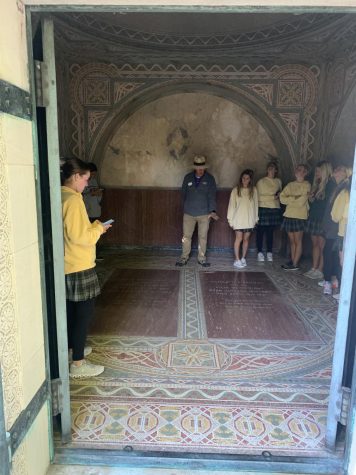
The value, beauty, and respect of the graves are all of major importance to Bellefontaine. One of the tour guides, Jeff, has more than 200 hours of research on the cemetery. He had lots of unique facts about many different aspects of the graveyard.
“Cemeteries aren’t concerned with the date someone was born, or even the date they died. The big date they care about was the day someone is buried,” Jeff said.
Another symbol of family heritage are the pillars that decorate a mausoleum. If pillars surround all four sides of the structure, then it is Greek. If pillars are only on the front, then it is Roman. Many of the people buried in and under these expensive graves are well known or survivors of well known historical events. Four revolutionary war soldiers, Titanic survivors, the famous Lemp family, and the founder of Barnes Jewish hospital all reside at Bellefontaine cemetery.
Senior Noelle Adamski is in the Death, Dying, and Living class and participated in this field trip. She, along with most, learned a lot of new information about this specific graveyard.
“The most surprising fact I learned was that plastic flowers are absolutely not permitted in the cemetery. Thinking on it now, it makes sense that people want where their loved ones are buried to look genuine and not tacky, therefore flowers must be real if they are desired and must be replaced frequently. I think that is beautiful because it actually might be a way of bringing the family back to the grave more often,” Noelle said.
Mr. Lodes has been bringing students to the graveyard for several years for the Death and Dying and Living theology elective course. According to the curriculum guide the course exposes its senior students to the exploration of death, dying, and the integral relationships they play in life. This helps everyone understand and appreciate the lives given to them by God.



